Cordage For Survival
cordage is an essential piece of Survival Gear For a get home, bugout, or inch bag.
In a survival situation, cordage has so many uses I could fill pages with examples of how handy it is. And while I do tend to be a little verbose, I will restrain myself and list down just a few examples at the end of this article. Cordage for survival breaks down what the best cordage survivals should have in stock.
For simplicities sake, I will just call it cordage from now on, yes I do know there is a difference between cord and rope. But I am lazy and this makes things so much easier. So let’s get into this and have a look at some of our options.
There are basicaly two types of cord material.
Natural VS Synthetic Cordage.
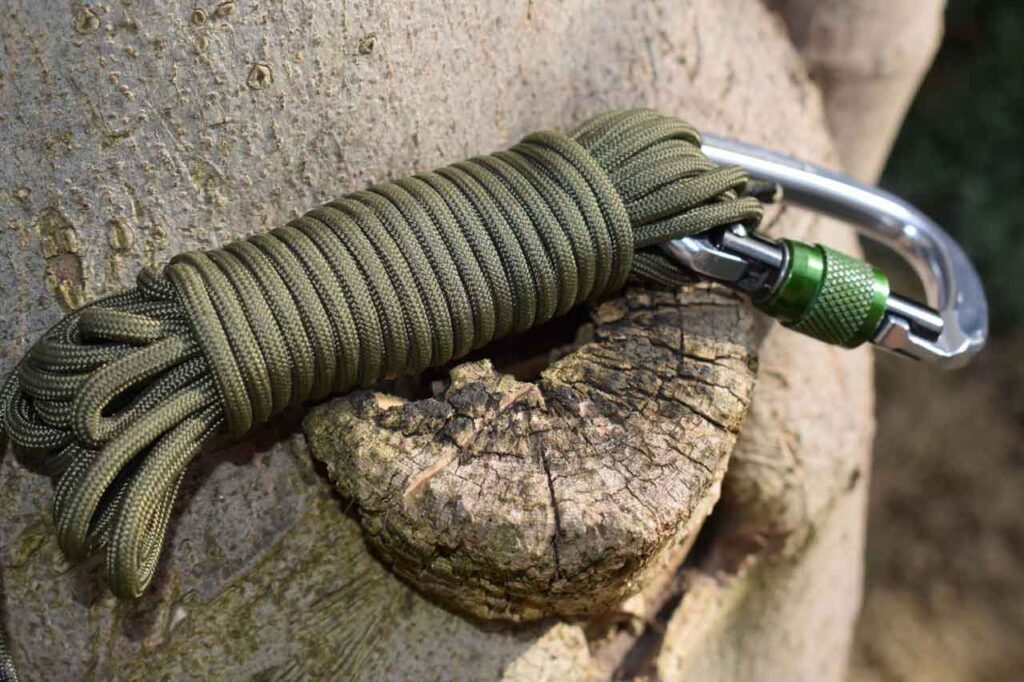
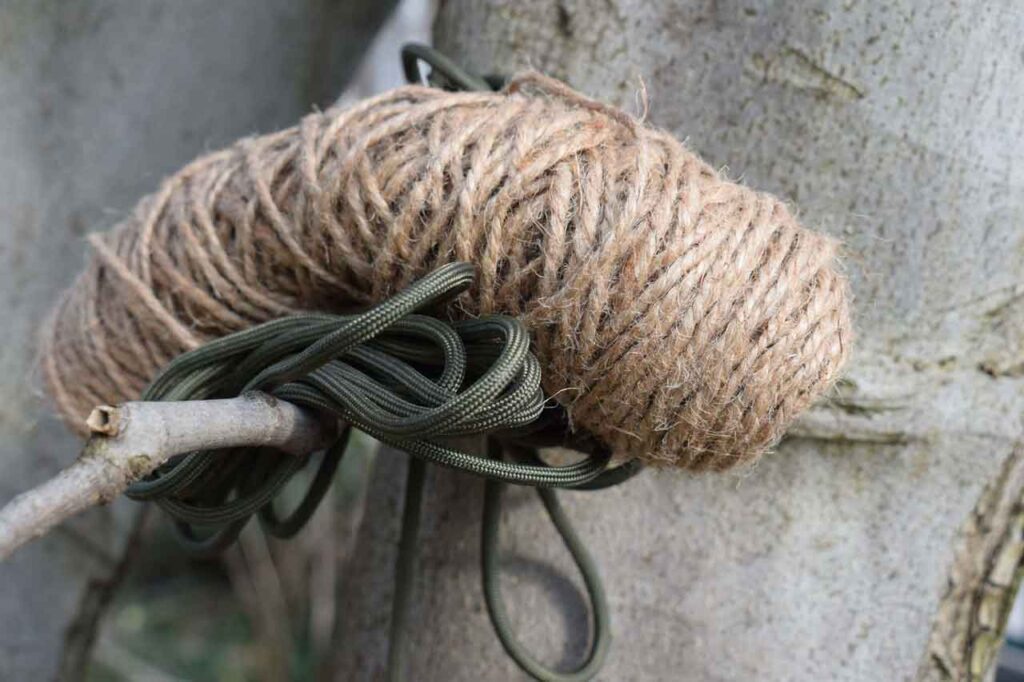
Natural cordage can often be used as tinder as natural cord burns well, and is usually quite budget-friendly.
Synthetic cordage as a general rule will melt under heat, therefore it cannot be used as tinder. But has a higher tensile strength than natural cordage of the same diameter.
There are many types of cordage created for a variety of different uses. What we are looking for is the most versatile ones we can get our hands-on. Carrying a dozen different types would be impractical.
I will list down the 5 types of cordage that I think would come in handy in a bugout bag and that I usually have packed in my B.O.B
1. Paracord: easy to tie, (and untie if the right knots are used), lightweight, and extremely versatile.
(minimum 30 meters).
2. Climbing rope: for rappelling and getting yourself or someone out
of a jam.
(minimum 15 meters, preferably 20+). Need does depend on your environment). Eg: not that handy in the dessert, very handy in hilly areas.
3. Fishing line: err… for fishing, need I say more? PS: it can also be used to fish for birds (only do this in a life or death situation, catching birds with a hook and line is illegal).
4. Dental floss: decent tensile strength and has a variety of uses and packs really small for a long length of cordage (you will also have nice clean teeth and fresher smelling breath).
5. Snare wire (technically not cordage): I can almost hear all you hardcore hunters out there getting ready to bite my head off, but the fact of the matter is, trapping is a very efficient way of getting food. The only faster way I know of is foraging (depending on your environment of course).
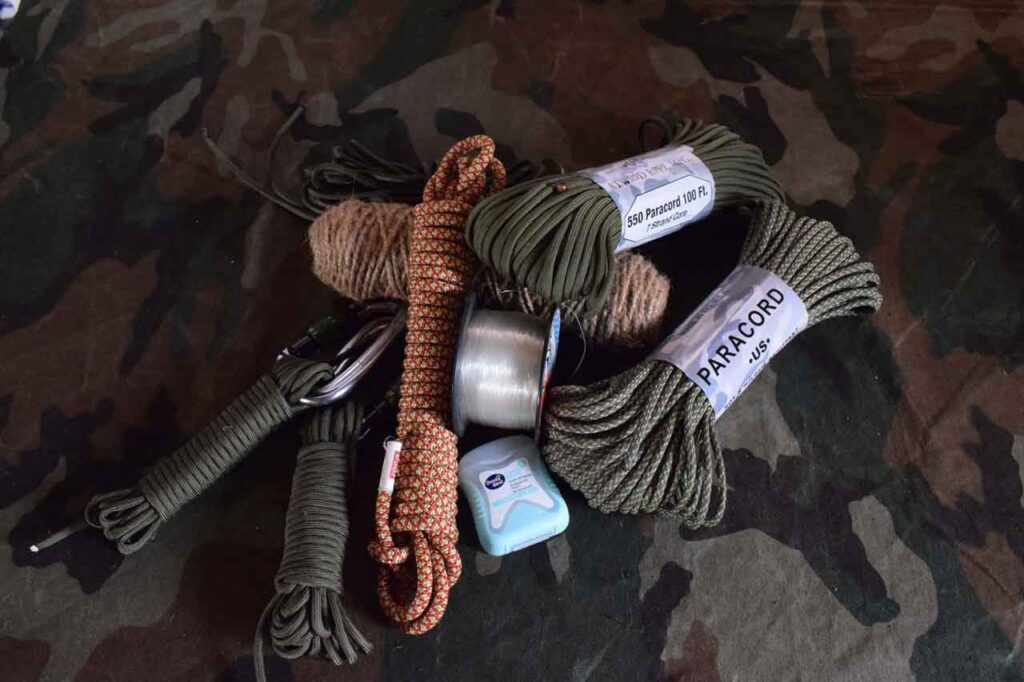
Alternative cordage for survival you can pack with you:
1. Bank line: good cordage, relatively cheap, not as versatile as paracord.
2. Sisal cord: essentially the same as jute, although rougher and stiffer, it is a little bit more durable. But not as friendly on the hands.
3. Jute line: cheap, good for lightweight lashings, biodegradable, and can be used as tinder for starting a fire. (great for training lashings, knots, and survival skills).
4. Kevlar cord: very good cord, high heat resistance, high tensile strength, high abrasion resistance. Very expensive compared to other options. But if you can afford it, well worth it, to pack in your B.O.B. Not recommended for training.
5. Survivor cord: paracord with a lot of extra oomph, increased tensile strength, and 3 extra build-in cords, a fishing line, waterproof fire tinder, and a utility wire made of brass. This is an upgraded version of paracord, at an upgraded price.
6. Survivor cord XT: the latest and the greatest version of the paracord. 750 paracord with an extra 3 lines, a Kevlar strand, waterproof fire tinder, and a braided fishing line, premium paracord at a premium price.
7. Parapocalypse 625 lbs, 11 strand paracord, Atwood Mgf answer to the survivor cord. A more reasonably priced survivor cord.
What is Cordage Used for?
1. Building a shelter.
2. Fishing
3. Making a bow drill to start a fire
4. Hanging your food out of the reach of local wildlife
5. Tinder to start a fire (if its natural cordage. Eg: jute, sisal, hemp, etc)
6. Creating primitive weapons (bows, slings, spears with flint tips, arrows with flint tips, bolas, primitive axes, etc)
7. Makeshift nets
8. Traps or snares, In this article there is a great book on Trapping and best of all it is a Free Ebook.
9. Guidelines in the dark
10. Repairing your kit… sewing up holes in clothing, bags.
11. Buildings a raft, floatation device.
12. Moving heavy objects with a pulley system
These are just off the top of my head. Depending on the cordage, the survival situation, your skillset, and your ingenuity. There could be 100s of uses for cordage.
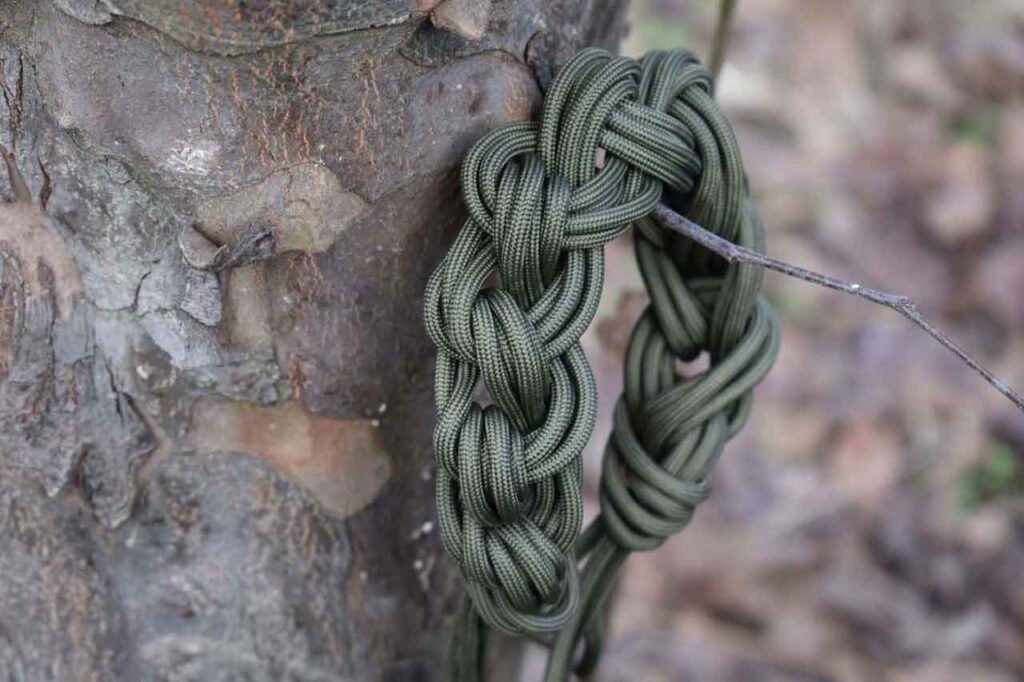
Best Cordage in a SHTF Situation.
Without a doubt I would pick paracord, not because it’s the strongest (Dyneema is stronger), or the cheapest (bankline is cheaper), but because it is the most versatile, and has great tensile strength to weight ratio. It also packs small, it’s Paracords versatility that has made it so popular with the prepper and survivalist community.
You can opt for the premium version of paracord, the much-lauded Survivor Cord XT, or The Parapocalypse.
Whichever version of paracord you choose to pack in your B.O.B. or EDC bag. Make sure you pick a good paracord and not a cheap knockoff meant for crafts or decorative use.
What Makes a Good Paracord?
There is quite a bit of difference between paracord brands, mil-spec being the standard that most people judge paracord by. Sadly there are dozens of companies that “claim” to manufacture Mil-spec paracord, and yet their quality is sub-par at best. Some companies do not make any claims of Mil-spec standards and yet they make very good paracord.
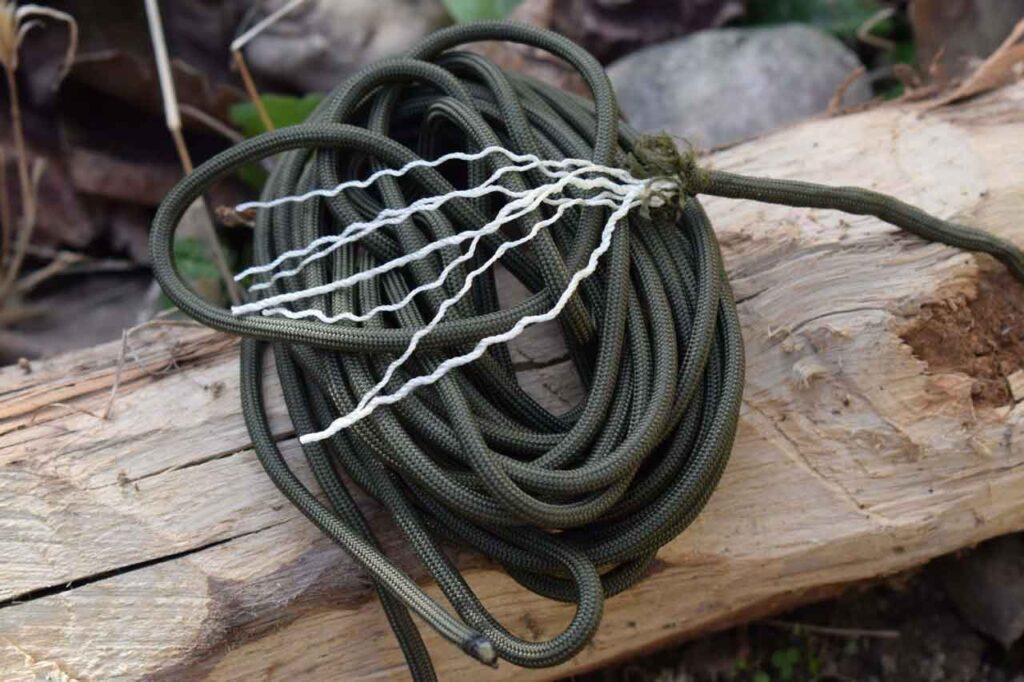
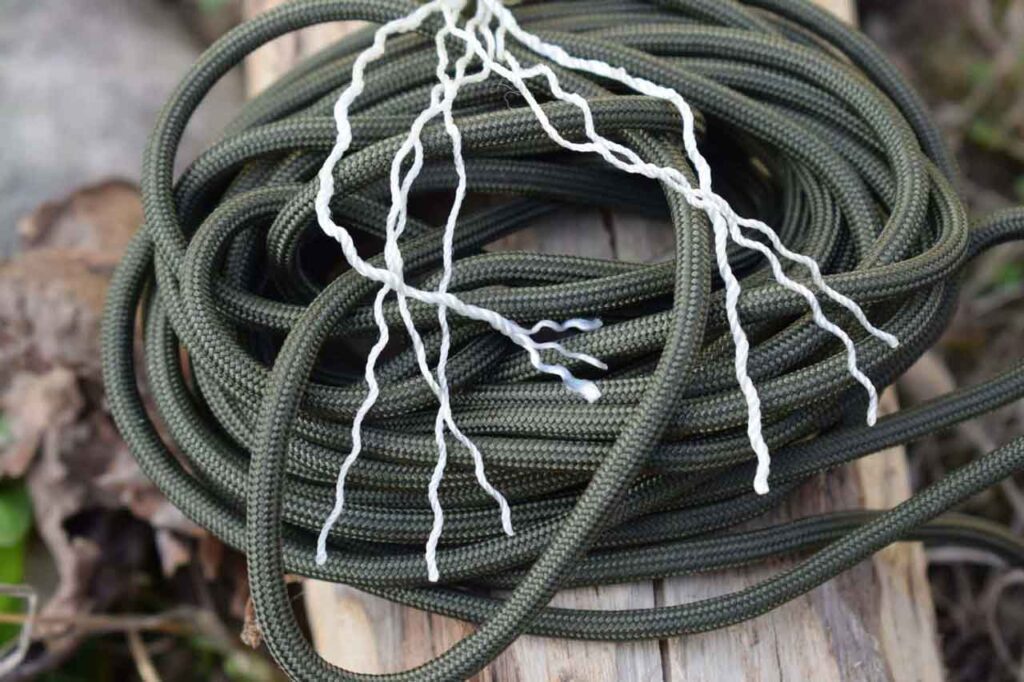
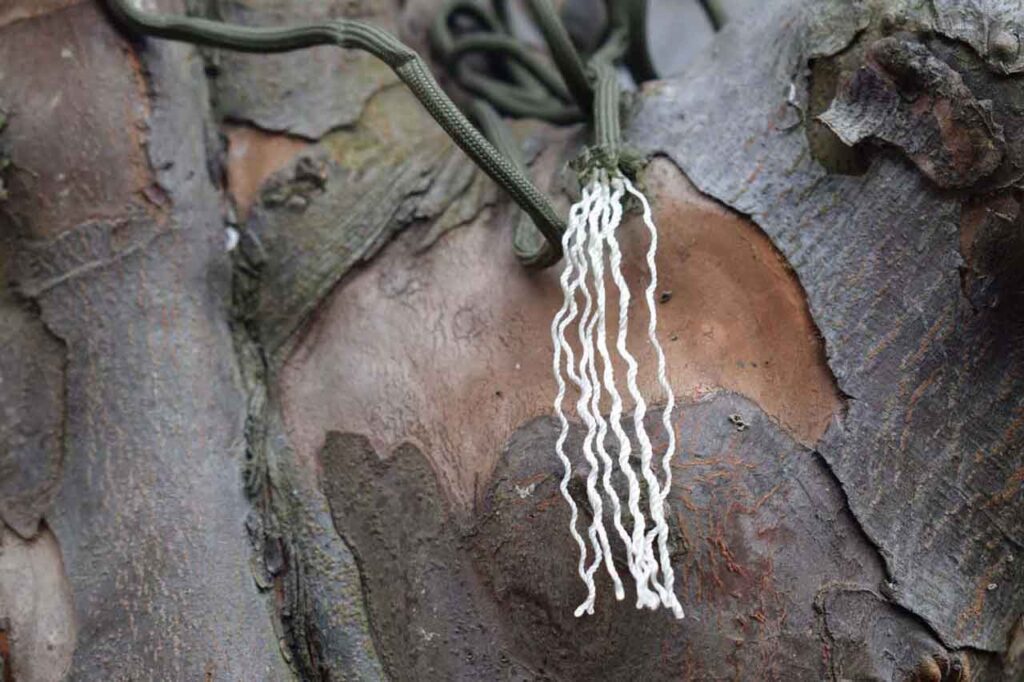
Choose your paracord carefully.
What to look for in paracord
1. Needs to be made of nylon, Polyester is a weaker material for paracord.
2. The inner core needs to be a minimum of 7 strands.
3. Each of the 7 strands need to be of a 3 strand braided cord. The strands need to be tightly braided, if they are loosely braided it is probably paracord meant for crafts or to be used decoratively.
4. The guts or Kern (inner strands) are relatively tightly packed into its sheath or mantel (outer shell). If the guts are swimming loosely in the sheath, then the paracord is of dubious quality.
Along with good cordage, you need the skills to use it… Learn your knots, certain knots work better with certain cords. Eg: learn fishermen’s knots to use on a fishing line, climbers’ knots for climbing, etc. Here are Survival Knots Everyone Needs To Know.
Cordage companies come out with new products regularly. If you have tried a cord that you think should be mentioned. Post a comment. I am always on the lookout for better alternatives.